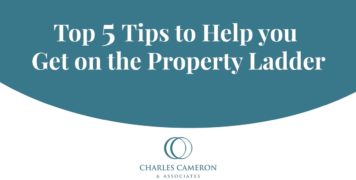Contact
020 7953 7040
info@ccameron.co.uk
Charles Cameron & Associates
Blackfriars Foundry
154-156 Blackfriars Road
London SE1 8EN
Property chains
August 7, 2023
Information published was correct at the time of writing
Problems and common causes of delays and failed sales...

“A property chain is a term used to describe a situation where multiple home buyers and sellers are interlinked, each depending on the other for their respective property transactions to complete successfully.”
If you’re navigating the world of home buying for the first time, a term you might encounter is ‘property chain’. A property chain is a term used to describe a situation where multiple home buyers and sellers are interlinked, each depending on the other for their respective property transactions to complete successfully. An individual in the market initiates this chain to buy but has nothing to sell. This person is usually a first-time home buyer.
On the other end of the spectrum is someone selling a property but not looking to buy another one. An example could be a retiree planning to move in with their family. The crucial ‘links’ that connect these two ends are composed of individuals looking to sell their current property and purchase a new one.
These participants play a significant role in the chain, as their transactions directly impact the others involved. Here’s an example of what a short property chain looks like:
- A first-time buyer (you) who is only buying.
- A homeowner is selling their home to you and buying a new one from a retiree.
- A retiree sells their home to the homeowner and moves in with their own family.
This is considered a two-person chain as it involves two home purchases. A significant issue with property chains is that if one transaction fails, it can cause the entire chain to collapse. This could happen due to various reasons:
- Inability to secure a mortgage: Stricter lending criteria can lead to failed mortgage applications, breaking the property chain.
- Problems with a property report: If a survey reveals severe issues with the property and the seller refuses to adjust the price accordingly, the sale might fall through.
- Gazumping: This occurs when a seller accepts a higher offer from another buyer after initially agreeing to a lower one. It’s legal in England and Wales but less common in Scotland.
- Change of mind: The buyer or seller may withdraw from the transaction, causing the chain to break.
- Change in personal circumstances: Issues such as illness or relationship changes can affect a party’s ability to buy or sell, disrupting the chain.
Breaking the chain can result in lost opportunities, unexpected fees and failure to sell at the desired price. Unfortunately, costs such as valuation, survey, conveyancing and brokerage fees are not refundable, leading to substantial financial loss. Now, let’s answer some common questions about property chains:
Q: What do ‘chain-free property’ or ‘no chain’ mean?
A: Being chain-free means buying a home without waiting for other transactions to complete. However, even if individual buyers or sellers are chain-free, a property transaction can still be part of a chain unless both parties are chain-free.
Q: How long does buying a home with no property chain take?
A: Without a property chain, the process can take anywhere from four weeks to three months. Properties sold without a chain are in high demand due to the speed and certainty they offer, resulting in faster sales.
Q: What is the average length of a property chain?
A: The duration of a property chain can vary widely. Depending on market conditions, selling a house can take around 130 to 200 days. However, the length of the chain doesn’t necessarily determine the timeline. A chain involving many properties might proceed smoothly, while a shorter chain could face numerous delays and potential failure. Each property chain is unique.
Don’t forget, our professional friendly advisors are on hand to support you and can help you explore all of your options.



